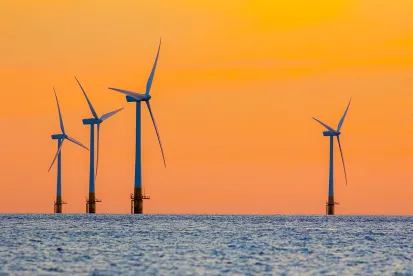The Internal Revenue Service (IRS) recently issued Notice 2024-30, which modifies guidance previously issued relating to the energy community “adder” for the investment tax credit and the production tax credit.
Additional Energy Communities
The Inflation Reduction Act of 2022 (IRA) provides taxpayers with increased tax credit amounts with respect to certain renewable energy projects that are located in an “energy community,” which includes (i) areas containing hazardous substances or pollutants, (ii) certain metropolitan statistical areas and non-metropolitan statistical areas (MSAs/non-MSAs) that have unemployment rates higher than the national average and high rates of employment or tax revenue from the fossil fuel industry, and (iii) census tracts containing or near to certain closed coal mines or coal-fired powerplants.
Notice 2024-30 expands the categories of industries in which employment may be considered in determining whether an area qualifies as an energy community under category (ii), by including employment (as published by the Census Bureau) in industries included in NAICS codes 2212 and 23172 for natural gas distribution and oil and gas pipeline and related structures construction, respectively. The Notice also includes Appendix 1, which adds 446 MSAs/non-MSAs that qualify as potential energy communities, Appendix 2, which adds 122 MSAs/non-MSAs that qualify as energy communities in 2023. Taxpayers may wish to reconsider whether their project locations qualify as energy communities under the new guidance.
Offshore Wind Revisions
In 2023, the IRS issued Notice 2023-29, where it introduced the nameplate capacity test and footprint test to determine whether a project is in an energy community (which is summarized in our April 2023 GT Alert). The IRS guidance previously provided that projects with offshore generating units that are not located in a census tract, MSA, or non-MSA (Offshore Projects) should attribute the nameplate capacity of those units to the land-based equipment that conditions the energy produced which is closest to the point of interconnection for those units. Notice 2024-30 revises that rule to provide that the nameplate capacity of Offshore Projects may be attributed to (i) any land-based power conditioning equipment or (ii) certain “supervisory control and data acquisition equipment” (or “SCADA” equipment). For purposes of this attribution rule, SCADA equipment must be owned by the taxpayer that owns the project, used to monitor and control the project’s operations and located in a port used to facilitate maritime operations necessary for the installation or operation and maintenance of the project. Additionally, the port must have a significant long-term relationship with the project (i.e., the taxpayer that owns the project owns or leases with a term of at least 10 years the port in which the SCADA equipment is located), and the taxpayer that owns the project must have employees or independent contractors based at the port performing functions essential to the project’s operations.
For tax years ending after April 4, 2023, taxpayers may rely on the rules described in Notice 2023-29, as previously clarified by Notice 2023-45 (which is summarized in our June 2023 GT Alert) and modified by Notice 2024-30, until the IRS issues proposed regulations.





 />i
/>i

